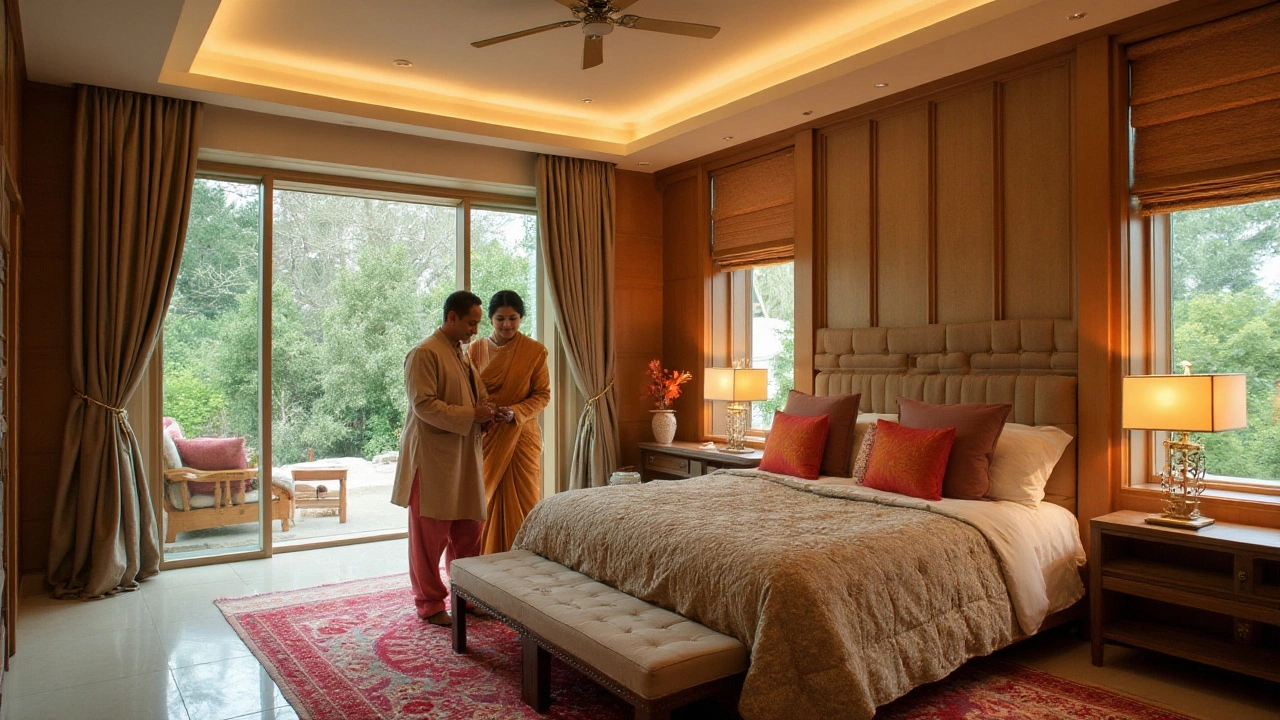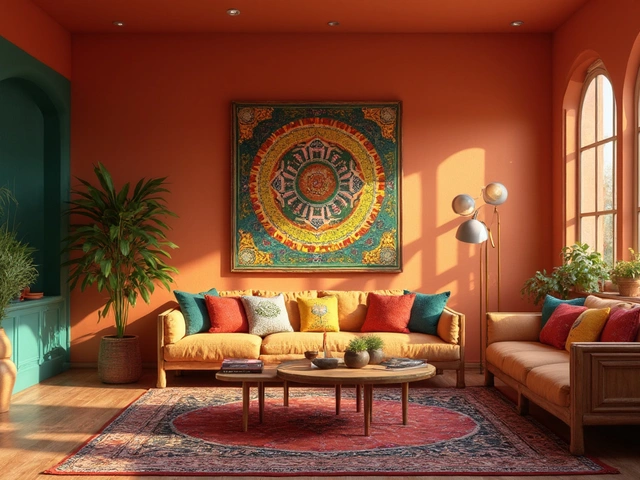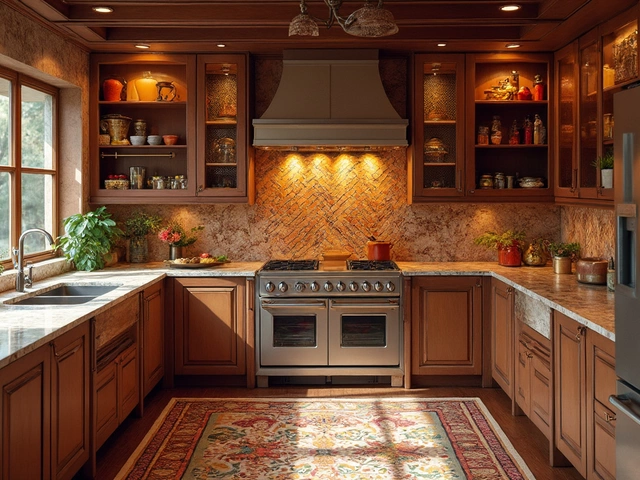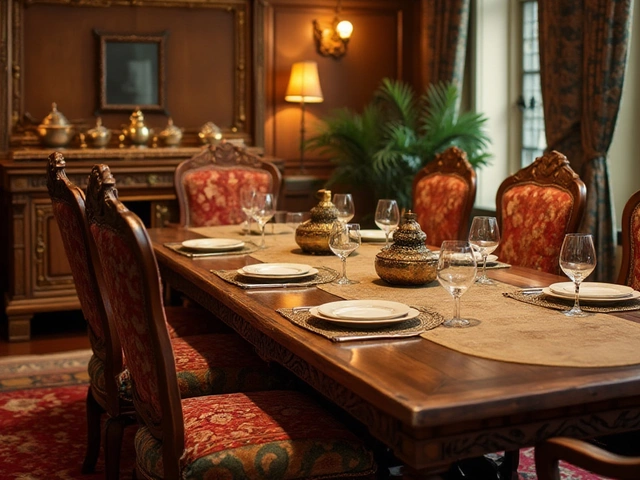Rethinking your personal space often leads to exciting opportunities, like a bump out addition to your master bedroom. This modest extension can transform a cramped sleeping area into a luxurious retreat. While the idea is appealing, understanding the costs involved is crucial before diving in. Knowing what to expect financially helps in making informed decisions that align with your lifestyle and budget goals.
A bump out isn't just about extra square footage; it's about creating a seamless blend between the old and new spaces of your home. While many homeowners dream of expansive master suites, it's important to recognize the various elements that contribute to the final cost of such a project. Let's dive into what's typically involved and explore some practical considerations for making the most out of your investment.
- Understanding Bump Out Additions
- Factors Influencing Cost
- Budgeting for Your Project
- Potential Savings Strategies
- Hiring the Right Professionals
Understanding Bump Out Additions
If you've ever felt the walls of your master bedroom closing in on you, a bump out addition could very well be the perfect solution. Essentially, a bump out is a smaller-scale extension that pushes one wall of the house outward by a few feet without altering the existing foundation significantly. It's an innovative approach to space enhancement that caters to a variety of needs, especially when you're not ready to commit to the larger expense and complexity of a full addition.
Unlike traditional home additions that may require extensive foundation work or roofing alterations, a bump out usually leverages your existing infrastructure. This can make it an accessible option for many homeowners aiming to expand their living space without the financial overhead associated with traditional remodels. Interestingly, the concept of bump out additions has been around for decades, yet its popularity has surged in recent years as property values rise and families look to maximize their current spaces.
A certain intrigue lies in how effectively this modification can blend with the rest of your home. Skilled architects and contractors can design a bump out to appear as if it has always existed. This requires meticulous planning, a good eye for aesthetics, and a deep understanding of structural integrity. A well-done bump out can even enhance the exterior appeal of a home, something that prospective buyers often appreciate if you ever decide to sell. Some experts in real estate even argue that the right kind of bump out addition can increase a home's resale value by 5-10%.
"Creating extra space in the home doesn't always mean the hassle of major renovations. A smart bump out addition can give you that desired spaciousness with minimal disruption," says Jane Doe, a notable home improvement specialist.
It's essential to know that a bump out addition doesn't always need to be massive to be effective. In fact, even extending a room by as little as two to three feet can dramatically change its usability and comfort. This modest increase can allow for better furniture placement, creating a more open and inviting atmosphere—ideal for a master bedroom. For those who seek even more functionality, a bump out can also provide space for additional closets or storage solutions. Imagine turning that cramped bedroom into a serene oasis with enough room for a reading nook or a cozy sitting area.
As you embark on planning a bump out for your home, it's wise to consult with local zoning laws and building codes, as these can vary greatly depending on your area. Sometimes these details can affect both the size and scope of your planned bump out. Additionally, being informed about insulation and the integration of utilities like electricity and HVAC can make the difference between a drafty bump out and one that seamlessly extends the comfort of your existing bedroom. These considerations are key to ensuring your new space not only meets your current needs but also aligns with future uses.
While it may seem like a relatively simple undertaking, a successful bump out addition requires careful coordination between designers, engineers, and contractors. This collaboration ensures that every detail—from the structural elements to the finishing touches—aligns with your vision. With the right planning and execution, a bump out addition to your master bedroom becomes more than just additional space; it transforms into an enhanced living experience.
Factors Influencing Cost
When embarking on a bump out addition to your master bedroom, a multitude of factors play into the total cost of the project. These can vary widely from the materials you select to the intricacies of labor in your area. Generally, one of the most significant cost influencers is the structural aspect of the addition. Extending a room's footprint means assessing and potentially altering the home's foundation, which can be both time-consuming and expensive. Reinforcing the foundation to support the new structure might be a necessary step, especially if your home is older or built on challenging terrain.
Another crucial factor is the choice of materials. A cost-efficient material selection might include vinyl siding or basic drywall, which supports an affordable budget. On the other hand, opting for high-end finishes such as cedar siding or specialized architectural detailing will drive up costs significantly. Deciding early on the level of finish you desire helps to frame your budgetary expectations. Then there's the interior of the bump out; choices around flooring, lighting fixtures, and bespoke furniture will also have a pronounced impact.
Labor costs shouldn't be overlooked. Depending on where you live, hiring skilled professionals might take up a large portion of your budget. In urban areas especially, labor can be both pricey and variable. According to the U.S. Bureau of Labor Statistics, construction labor costs have been rising gradually, with a notable increase in skilled labor like electricians and plumbers. This makes it crucial to allocate enough from the budget for qualified personnel who can deliver on quality and time.
"Underestimating labor costs is a common pitfall in home renovations. It's always wise to add a buffer of about 10 to 20% over the initial estimate," advises Tom Silva, a veteran contractor from the reputable Home Builders Association.
Legal and zoning considerations, often dictated by local municipalities, can also contribute to costs. Securing the necessary permits involves fees that vary based on jurisdiction, and not securing them could lead to fines or future complications. It’s always better to check whether your planned expansion falls within local regulations. Lastly, you may encounter unexpected costs such as rerouting electrical or plumbing systems, which can add a financial layer of complexity if the project expands into attic or basement spaces. These hidden costs show why a detailed upfront assessment is essential to your planning process, mitigating financial surprises along the way.
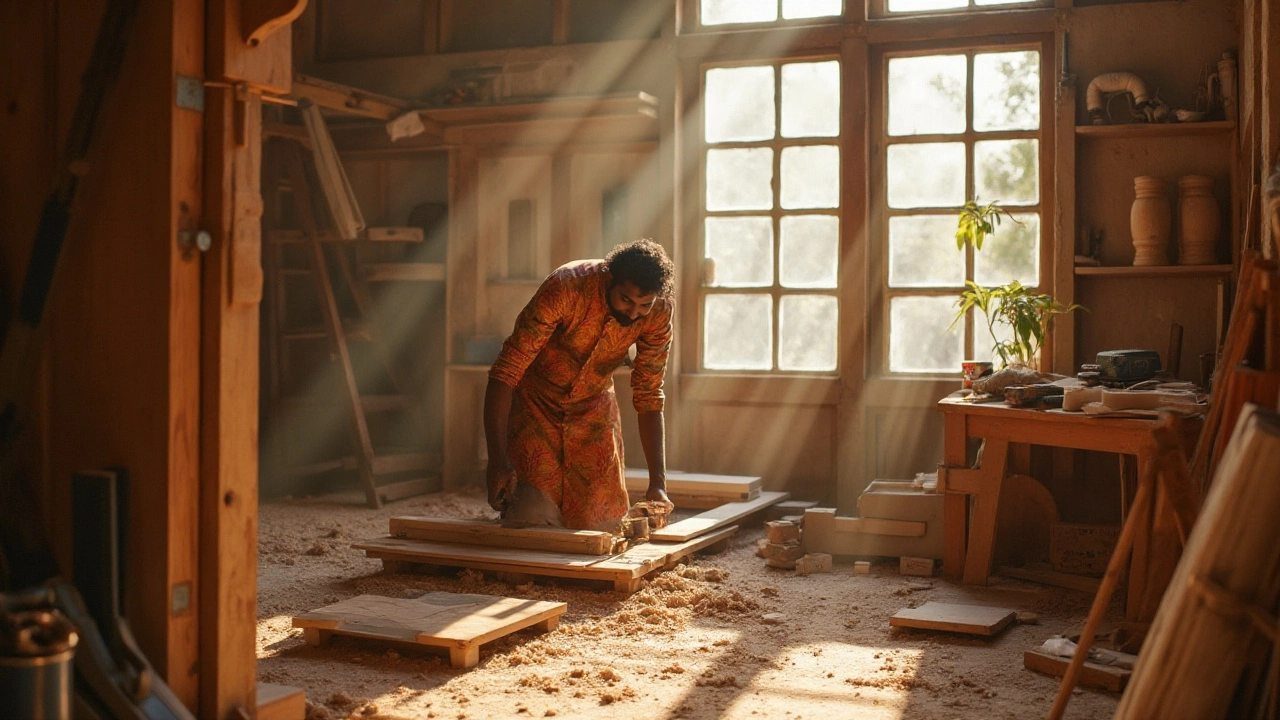
Budgeting for Your Project
Bumping out your master bedroom is an exciting project, but building an effective budget involves careful planning. The average cost of such an expansion can vary widely, depending on various factors, including materials, labor, and the complexities of your home's existing structure. On average, homeowners might spend anywhere between $10,000 to $30,000, though this can easily rise depending on customizations and regional cost differences. Understanding where your money goes is crucial to avoid surprises that can leave a project stalled or incomplete.
One key component is understanding how labor costs factor into your budget. Depending on your location and the complexity of your project, labor can consume up to 40-50% of your expenses. Hiring experienced professionals, although potentially more expensive upfront, can save money in the long run by avoiding mistakes and ensuring efficient, high-quality work. A detailed contract, clearly outlining labor costs and a project timeline, can provide a cushion against unexpected expenses.
Material choices also weigh heavily in your budget planning. From flooring and drywall to windows and fixtures, every decision supports your budget's texture and feel. Costs for materials can differ significantly; opting for higher-end finishes like hardwood flooring or granite countertops will naturally elevate expenses. A detailed list of materials with estimated prices can keep your finances transparent. In a discussion on home renovations, one homeowner noted,
"Choosing cost-effective materials doesn't mean sacrificing quality; many affordable options offer both aesthetics and durability."
Avoiding Common Budget Pitfalls
A crucial step in setting your budget is anticipating unforeseen circumstances. Many projects encounter unforeseen challenges such as structural issues or needed repairs. Planning an extra 10-20% as a contingency budget for unexpected developments provides peace of mind. Also, obtain several quotes from potential contractors to ensure you're receiving competitive offers that fit within your financial plan. Refrain from choosing the cheapest bid, as lowball offers might compromise on quality.
Tax incentives or local rebates might also apply to home expansions, providing an opportunity for cost recovery. Many regions offer energy efficiency grants or tax breaks for enhancements that improve a home's efficiency, like new windows or insulation. Local municipal websites or consulting with your contractor can illuminate these opportunities. Bump out additions not only enhance your living space but can also increase the value of your home, offering a return on investment when considering future resale.
Potential Savings Strategies
When planning a bump out addition for your master bedroom, capitalizing on effective savings strategies can make a considerable difference. While the prospect of additional space can be exciting, it’s important to approach the project with some financial tact. One of the most efficient ways to save on costs is by thoroughly researching and understanding the pricing trends within the construction and remodeling industry. Knowing when demand is low and supply chains are fluid can help you time your project to gain cost-effective deals on materials and labor.
Opting for creative design solutions without compromising on quality is another great way to save. Consider working with a designer or architect who has a knack for sustainable and innovative design techniques. This might involve using reclaimed materials which can dramatically cut expenses. These eco-friendly materials are not only kinder to your budget but also to the environment, making them a popular choice for modern renovations. Many homeowners find value in utilizing prefabrication methods that reduce on-site construction time considerably, thereby saving labor costs.
Negotiation and Smart Financial Planning
Never underestimate the power of negotiation when it comes to dealing with contractors. Many professionals are willing to offer discounts or extras if you build a long-term relationship with them. It's wise to gather multiple quotes and don’t hesitate to play them off each other to get the best price. Strategic financial planning also plays a major role in potential savings. Setting a realistic budget and sticking to it is paramount. Allocate a certain percentage of your budget for unexpected expenses as these can accumulate rapidly if not properly managed.
"Budgeting before design is crafting a masterpiece for yourself, where indulgence and financial prudency coexist." – Jacob T. Architecture Digest
Consider managing demolition tasks by yourself if you feel up to the challenge. While it’s essential to be safe, undertaking small demolition tasks can save you a pretty penny. Alternatively, hiring local subcontractors for specific tasks rather than a full-time general contractor can often lead to cost reductions, especially if you’re overseeing the project yourself. Leverage any DIY skills you may have for simpler tasks like painting or installing finishes.
Energy Efficiency and Long-Term Savings
Implementing energy-efficient solutions can contribute to significant savings long after the addition is complete. Invest in high-quality insulation and energy-efficient windows that might come with a higher upfront cost but will reduce utility bills in the long run. Installing smart home systems can help monitor and save energy effectively, thus decreasing monthly bills. Don’t overlook any government rebates or incentives for energy-efficient upgrades as they can offset some of the initial installation costs.
| Energy-Efficient Installations | Cost Savings (% per year) |
|---|---|
| Insulation | 15-20% |
| Smart Thermostats | 10-12% |
| Energy Star Windows | 15% |
Any savings approach should be customized to your unique situation. Each master bedroom remodeling project varies, so it's crucial to weigh different strategies and find what best suits your financial condition and personal preferences. With careful planning and these potential savings strategies in mind, your bump out addition can become a smooth and rewarding venture.

Hiring the Right Professionals
Embarking on a home expansion, especially for a master bedroom remodeling, involves a myriad of decisions, and one of the most crucial is selecting the right professionals for the job. This choice can make or break the success of your project. A qualified team will not only ensure the technical aspects are flawlessly executed but also guide you through the creative process. It's important to start with a clear idea of what you want but remain open to suggestions. Professionals in this field bring valuable insights and experience, often pointing out things you might not have considered.
When looking to hire, cast a wide net in your search for a team blending innovation with practicality. Start by seeking referrals from friends, neighbors, or online community boards. Once you've narrowed down potential candidates, it's wise to conduct thorough interviews. Preparing a list of questions helps keep the conversation focused and productive. Ask about their past projects, request a portfolio of their work, and check references. Doing so can help you gauge their ability to manage your project and understand your vision. Importantly, verify their credentials. Verify licenses, insurance, and any necessary certifications to safeguard against liabilities.
Negotiating contracts is another critical step. A comprehensive contract lays the foundation for a smooth project by clearly outlining the scope of work, timelines, budgets, and deliverables. Getting multiple bids for comparison can shed light on reasonable pricing. A common mistake is rushing this stage due to excitement or impatience. Remember, the cheapest option isn't always the best; balance cost with quality and communication skills. Engaging a designer or architect alongside your contractor might be beneficial. These experts can provide detailed drawings and often have reliable contractor networks, easing the selection process.
"The bitterness of poor quality remains long after the sweetness of low price is forgotten," said Benjamin Franklin. This timeless quote underscores the importance of making well-considered hiring decisions.
Bump out additions require precise attention to alignment and integration with the existing structure. An experienced professional will be adept at merging these elements, ensuring your new space is not just functional but aesthetic too. Once hired, maintain regular check-ins and reviews as the project progresses. Open communication with your team defuses misunderstandings and ensures goals align.
For those concerned about cost surveillance, consider a flexible payment schedule tied to project milestones. This approach can keep finances manageable and provide leverage if the project isn’t proceeding as agreed. Statistical support for engaging the right professionals can be found in reports from construction industry associations
| Engagement Strategy | Success Rate |
|---|---|
| Utilizing licensed professionals | 85% |
| Regular client-professional check-ins | 90% |
Ultimately, the goal is for your master bedroom bump out addition to be a space of comfort and joy, and the right team will possess the technical ability and visionary outlook to make this a reality.
